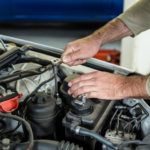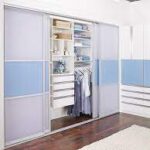The crawlspace in your home may be out of sight and out of mind, but it is critical to the overall health and structural integrity of your home. Unfortunately, crawlspace moisture issues are all too common and can cause a slew of problems if not addressed. In this blog post, we’ll look at the signs of crawlspace moisture problems and explain when it’s time to consider waterproofing this often-overlooked space beneath your home.
The Value of a Dry Crawlspace
Before we get into the symptoms of moisture problems, let’s first understand why a dry crawlspace is so important:
1. Structural Stability
A dry crawlspace helps to keep your home’s structural integrity. Moisture can cause rotting wood, rusting metal components, and deterioration of concrete and masonry, all of which can jeopardize the stability of your home.
2. Air Quality and Health
Excess moisture in the crawlspace can foster the growth of mold and mildew. Mold spores can become airborne and enter your home, causing health problems such as allergies, respiratory problems, and skin irritation.
3. Pest Management
Pests such as termites, ants, and rodents can enter your home through gaps and cracks in a damp crawlspace. Proper waterproofing can help keep these unwanted visitors at bay.
4. Energy Conservation
A wet crawlspace can increase humidity in your home, making it more difficult for your HVAC system to maintain a comfortable indoor temperature. As a result, your energy bills may rise as your system works harder to compensate.
Symptoms of Crawlspace Moisture Issues
Now, let’s look at the signs that your crawlspace may be experiencing moisture issues:
1. Wet or Damp Crawlspace
A damp or wet crawlspace is one of the most obvious signs of moisture problems. Standing water, wet soil, or moisture on the walls or floor are all indicators of a problem.
2. Musty Smells
If you notice musty or moldy odors in your home, especially in the lower levels, this could be an indication of crawlspace moisture issues. Mold and mildew produce distinct odors, which can permeate the floors and walls.
3. Mildew and Mold Growth
Visible mold and mildew growth on crawlspace surfaces, such as floor joists, walls, and insulation, indicates excessive moisture. Mold comes in a variety of colors, including black, green, and white.
4. Insulation that is Sagging
Moisture can cause crawlspace insulation to become damp and heavy, resulting in sagging or falling insulation. This reduces its effectiveness while also indicating a moisture problem.
5. Infestations of Pests
Pests such as termites, ants, and rodents can be attracted to a damp crawlspace. Excess moisture may be the cause of pest activity or the discovery of nests or tunnels in your crawlspace.
6. Excessive Indoor Humidity
Excess moisture in the crawlspace can cause higher levels of indoor humidity. Condensation on windows, a sticky feeling in the air, or an increased need for dehumidifiers are all possible symptoms.
7. Cracks in the Foundation
Moisture in the crawlspace can put pressure on the foundation walls, causing cracks or structural damage. Examine the foundation walls for signs of cracking or shifting.
8. Paint Peeling or Staining
Paint on the walls or ceilings above the crawlspace may peel or stain as a result of moisture. These visual cues may indicate moisture problems beneath.
9. Rotting Timber
In a damp environment, wooden components in the crawlspace, such as floor joists and support beams, are prone to rot. Examine these components for signs of deterioration.
10. Rising Energy Costs
If you’ve noticed an increase in your energy bills, it could be because your HVAC system is working harder to maintain a comfortable temperature in a humid indoor environment caused by crawlspace moisture problems.
When Should You Consider Waterproofing?
If you notice any of the above signs, it’s critical that you act quickly to remove moisture from your crawlspace. Waterproofing your crawlspace is a preventative measure that can prevent further damage and improve the overall health of your home. Here are some scenarios in which waterproofing should be considered:
1. When You Notice Signs of Moisture Issues
When you notice signs of moisture in your crawlspace, it’s time to think about waterproofing. Ignoring these warning signs may result in more extensive damage and costly repairs in the future.
2. In the Course of a Home Inspection
When buying or selling a home, it’s a good idea to include a crawlspace inspection. If moisture issues are discovered during the inspection, it is a clear indication that waterproofing may be required.
3. Prior to Any Renovations or Remodeling
Consider waterproofing before starting any renovations or remodeling projects in the crawlspace. It ensures that your home improvement investment will not be jeopardized by moisture-related issues.
4. When Considering Preventive Maintenance
Crawlspace moisture problems can be avoided with regular maintenance. Make crawlspace waterproofing a part of your preventative maintenance plan if you’re planning routine home maintenance.
5. Increase Energy Efficiency
If you’ve noticed an increase in your energy bills and believe crawlspace moisture is to blame, waterproofing can help improve energy efficiency by lowering humidity levels in your home.
Methods of Crawlspace Waterproofing
Crawlspace waterproofing entails a variety of methods and strategies for keeping this space dry and free of moisture-related issues. The following are some common crawlspace waterproofing techniques:
1. Encasement
Crawlspace encapsulation is an all-encompassing approach that entails sealing the crawlspace with a vapor barrier or liner. This barrier keeps moisture out of the crawlspace, resulting in a clean, dry, and conditioned environment.
2. Drainage Techniques
A crawlspace drainage system, such as a sump pump or French drain, collects and directs water away from the crawlspace. This avoids water accumulation and potential damage.
3. Air Circulation
By allowing excess humidity to escape, proper crawlspace ventilation aids in the maintenance of a balanced moisture level. Vents, exhaust fans, and dehumidifiers are examples of ventilation systems.
4. Gap and Crack Sealing
Water intrusion can be prevented by sealing gaps and cracks in the foundation walls and floor. For best results, this method is frequently combined with other waterproofing techniques.
5. Dehumidification
In the crawlspace, using a dehumidifier can help maintain lower humidity levels, preventing moisture-related issues like mold growth.
Seek Professional Advice
Crawlspace moisture issues should not be underestimated because they can cause extensive damage and health problems. It is critical to consult with crawlspace waterproofing experts to assess the situation, identify the root causes of moisture intrusion, and recommend appropriate solutions. A properly executed crawlspace waterproofing project can protect your home, improve indoor air quality, and extend the life of your investment, click here to learn more.
Conclusion
A dry and well-maintained crawlspace is critical to your home’s overall health and stability. Crawlspace moisture issues should not be ignored because they can cause structural damage, mold growth, pest infestations, and poor indoor air quality. By recognizing these signs and acting quickly, you can avoid costly repairs and improve the overall health of your home. Consult with a professional to determine the best crawlspace waterproofing solutions for your specific needs, and then relax and enjoy the peace of mind that comes with a dry and healthy home.





